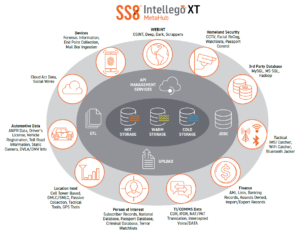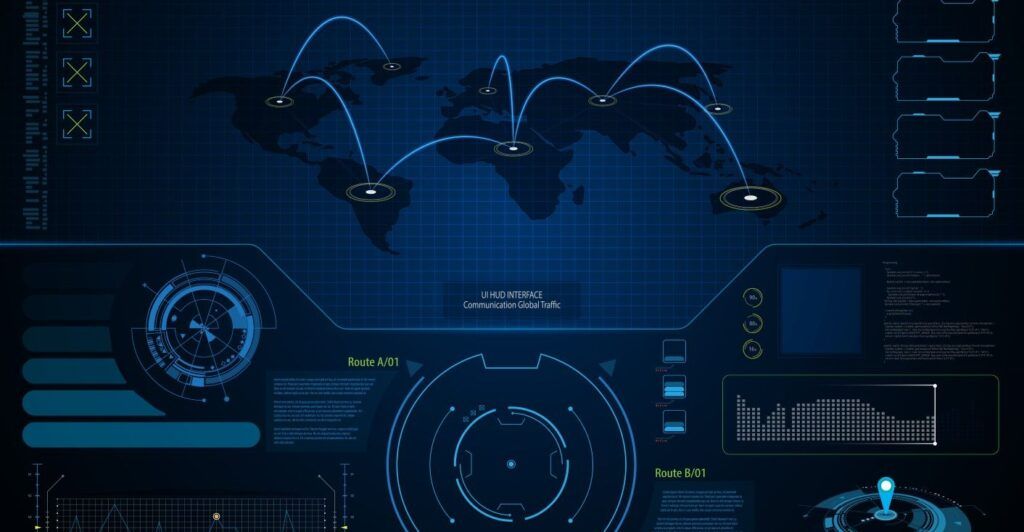The first breakthroughs of a case often emerge as relationships among scattered bits of data. High-accuracy location intelligence is a common key ingredient, adding context such as the presence of an individual or group at a specific place and time. For example, location-driven analysis of meetings and patterns of life can be the foundation for investigators to understand events and establish a pool of suspects. Those location footprints often provide the starting point for cases that have little else to go on at first.
Encrypted communications and over-the-top messaging channels have become ubiquitous. While this evolution limits the value of wiretap-style eavesdropping, today’s networks also provide the foundations for real-time geographical awareness based on high-accuracy location. Investigators have largely lost the ability to listen in on calls but gained a far more powerful engine for data-driven insight, with location data at its center.
At the same time, global regulators are pursuing stricter location requirements, largely to support emergency services. A current rules proposal by the US Federal Communications Commission calls for improving the usability of z-axis (vertical) location data and providing in-building location by floor and room number. In step with these advances, the SS8 Intellego XT lawful intelligence platform uses end-to-end location intelligence as a unifying foundation to accelerate time to insight.
From Data to Discovery
Providing high-accuracy location data is critical to investigations, reducing the size of the area to be considered. This ability can make evidence gathering dramatically more efficient, to focus on a more targeted subject-of-interest group, for example, or to know more precisely which CCTV cameras are relevant. As the body of information sources grows to include financial transaction data, automated number-plate recognition (ANPR) devices, social media, and more, the ability to focus inquiry on fewer suspects becomes increasingly important.

Data Source Overview
Bringing together this wide variety of data sources makes a holistic view possible of the circumstances around a case. The SS8 platform makes the combination of end-to-end location and other data actionable by more accurately selecting data sources, then unifying and analyzing that data holistically. Breaking down data siloes can help reveal insights such as the fact that one of the drivers involved in an accident habitually stops off at a pub on the way home from work. Just before the crash, perhaps that individual spent more time than usual drinking and was then texting while driving at a high rate of speed and running the same stop sign for the third time that week.
For many law enforcement agencies (LEAs), bringing all that data together is a manual, cumbersome process. Mobile network operators often deliver intercepted information in hard-to-digest form, such as separate spreadsheet files for location data, text messages, and so forth. All of these must be manually correlated using timestamps, which is cumbersome and error-prone, making patterns of life and other insights harder to come by. That effect becomes more problematic as the number of suspects and data sources grows, an effect that the SS8 platform overcomes with automation that streamlines data collection and analysis.
Building a Case with End-to-End Location Intelligence
Context based on location information that is accurate to a specific street corner as opposed to a square-kilometer area routinely transforms investigations. For example, in the case of a robbery where the time and place it occurred are the only information available, creating a geofence around the perimeter of the shop is a likely first step. The SS8 platform can then identify the few people who were in the shop (rather than the dozens in the general vicinity) and identify employees versus customers to better focus the investigation.
The SS8 platform collates information transparently and automatically, revealing for example that two people with criminal records for armed robbery had spoken on the phone that morning and were both in the store during the robbery. More commonly, the clues are less obvious, and insights emerge from patterns of communication and travel by subjects of interest before and after the crime. Pulling together sources that can range from call data records and location to ANPR readers and DNA databases, the SS8 platform visualizes events.
We might see, for example, that two of the subjects in the store during the robbery started off from separate locations in the morning and met in a park, where a heat map shows they spent a lot of time walking around together. A camera shows one of them discarding a cigar butt, which an officer collects for a possible DNA match. Shortly after the robbery, visualizations show the two of them leaving in separate directions at high rates of speed. One of them discards their phone, but ANPR data provides the missing piece. An airtight case comes together rapidly, stolen goods are recovered, and prosecution is swift, with end-to-end location intelligence at the center of that success.
About Michael Gebretsadik

Michael has worked in the telecommunication industry for the better part of two decades, in roles ranging from engineering to product management, and business development. He has been involved with location technology since 2003, when he joined SnapTrack (a Qualcomm subsidiary). Prior to joining SS8 in 2020, Michael was responsible for growing the global Location-Based Services business for Comtech Telecommunications through channel partners and IoT OEMs. You can learn more about Michael on his LinkedIn profile.
About Stuart Walsh
 Stuart Walsh is a consultative technical sales leader with over 30 years of experience helping customers deliver solutions for success. As a technical leader in the Location division of SS8 Networks, Stuart is passionate about introducing next generation solutions and services to network operators and enterprises and driving business growth. Stuart also has a depth of experience in voice and data applications for both Enterprise and Service Provider customers. You can learn more about Stuart on his LinkedIn profile here.
Stuart Walsh is a consultative technical sales leader with over 30 years of experience helping customers deliver solutions for success. As a technical leader in the Location division of SS8 Networks, Stuart is passionate about introducing next generation solutions and services to network operators and enterprises and driving business growth. Stuart also has a depth of experience in voice and data applications for both Enterprise and Service Provider customers. You can learn more about Stuart on his LinkedIn profile here.
About SS8 Networks
As a leader in Lawful and Location Intelligence, SS8 is committed to making societies safer. Our mission is to extract, analyze, and visualize critical intelligence, providing real-time insights that help save lives. With 25 years of expertise, SS8 is a trusted partner of the world’s largest government agencies and communication providers, consistently remaining at the forefront of innovation.
Intellego® XT monitoring and data analytics portfolio is optimized for Law Enforcement Agencies to capture, analyze, and visualize complex data sets for real-time investigative intelligence.
LocationWise delivers the highest audited network location accuracy worldwide, providing active and passive location intelligence for emergency services, law enforcement, and mobile network operators.
Xcipio® mediation platform meets the demands of lawful intercept in any network type and provides the ability to transcode (convert) between lawful intercept handover versions and standard families.
To learn more, contact us at info@SS8.com.



